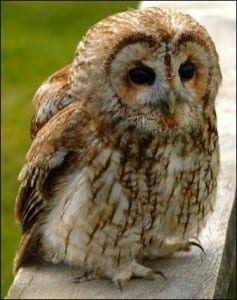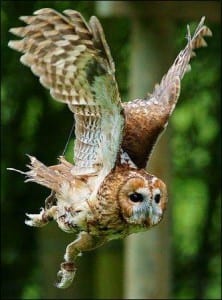Specimen of the Week: Week Fifty-Six
By Emma-Louise Nicholls, on 5 November 2012
 Our story begins in 1605. Put out by the lack of royal acceptance of their religion, 13 Catholic men decided the best way to get their voice heard, was to blow up the Houses of Parliament. The men planted 36 barrels of gun powder in a cellar just below the House of Lords. Sadly for them, though happily for historic architecture, they were betrayed. Some of the band of 13 realised that their shenanigans would more than likely end with the ‘accidental’ killing of innocents, including a couple of chums and a few fellow Catholics. With Jiminy Cricket whispering in their ears, the would-be terrorists revealed the plot in letters to specific members of parliament, telling them to ‘be out for the day’ on the 5th November. The chain of warning spread like gossip until the King received a memo, resulting in a set of guards being sent to investigate. One Guy Fawkes was caught red-handed in the cellar with the barrels of powder. Whoops. Bonfire night became a custom in which bonfires are set alight as a mark of defiance against terrorists and a celebration of Fawkes’ execution. (Though I have read that perhaps these last few years more people will be ‘honoring his attempt to do away with the government’. Decide for yourself). Either way, bonfires and fireworks are a tradition going back over 400 years and a lovely one at that. In honour of this day, this week’s Specimen of the Week is…
Our story begins in 1605. Put out by the lack of royal acceptance of their religion, 13 Catholic men decided the best way to get their voice heard, was to blow up the Houses of Parliament. The men planted 36 barrels of gun powder in a cellar just below the House of Lords. Sadly for them, though happily for historic architecture, they were betrayed. Some of the band of 13 realised that their shenanigans would more than likely end with the ‘accidental’ killing of innocents, including a couple of chums and a few fellow Catholics. With Jiminy Cricket whispering in their ears, the would-be terrorists revealed the plot in letters to specific members of parliament, telling them to ‘be out for the day’ on the 5th November. The chain of warning spread like gossip until the King received a memo, resulting in a set of guards being sent to investigate. One Guy Fawkes was caught red-handed in the cellar with the barrels of powder. Whoops. Bonfire night became a custom in which bonfires are set alight as a mark of defiance against terrorists and a celebration of Fawkes’ execution. (Though I have read that perhaps these last few years more people will be ‘honoring his attempt to do away with the government’. Decide for yourself). Either way, bonfires and fireworks are a tradition going back over 400 years and a lovely one at that. In honour of this day, this week’s Specimen of the Week is…
**The Tawny Owl**
1) Owl? The owl? What does an owl have to do with Bonfire Night? Let me tell you. The collective noun for owls is a parliament. See? Not so tenuous. ish. Of all the species of owl that we see in the UK, the tawny owl gets around the most. It is considered the most common species and has the widest range, though it doesn’t like the north of Scotland.
2) In a mirror image of a childs’ place in Victorian society, the tawny owl is most often heard but not seen. It produces a variety of vocalisations, including the familiar ‘ke-wick‘ contact calls. Males are the most hooty, utilising their tell-tale calls to advertise territory, in courtship, and for the owl equivalent of “Honeeeeey, I’m hooooome”, when bringing food back for the female. The female sometimes emits a similar sound to the male, though it is less clear and possesses a more wailing quality, clearly the result of a long hard day looking after the kids and doing the nest-work. Also, just in case, if you hear a tawny owl making a piercing coo-wik sound, you’re annoying it.
3) Tawny owls have a squat, compact body, which is odd as our specimen is rather tall and slender. Clearly an excellent example of interpretative taxidermy. They vary in colour from greyish to reddish brown with black and white streaks. Boys and girls look pretty similar.
4) As with all species of owl, tawny owls are superb hunters. They are almost entirely nocturnal, and hunt by doing absolutely nothing. Did you just re-read that sentence? Their genius energy preserving method of hunting requires them to sit down. And wait. They find a quiet perch, somewhere high up with a good view of the surrounding area, and listen. Once prey is detected, they swoop down with sharp claws extending form powerful feet that provide the meal with a quick end. If the feet fail to provide the equipment necessary, the owl will use its beak deliver a James Bond style sharp blow to the base of the victim’s skull.
5) Small mammals are normally associated with an owl’s dinner time but tawny owls also go for other species of winged creatures. They apparently bash bushes about with their wings, causing startled birds to fly straight out in to the waiting talons of the hungry owl. They have also been observed snatching incubating birds from their nests and bats from their roosting perches. A bit mean I’d say, but an owl’s got to do what an owl’s got to do.
Emma-Louise Nicholls is the Museum Assistant at the Grant Museum of Zoology
One Response to “Specimen of the Week: Week Fifty-Six”
- 1
 Close
Close





I was wondering about the colour phases, whether they are geographical, sexual selection related or just a randomn mix?
Owl lovers might be interested in this article from 2005, “The influence of Pleistocene glacial refugia on tawny owl genetic diversity and phylogeography in western Europe”
http://onlinelibrary.wiley.com/doi/10.1111/j.1365-294X.2005.02663.x/full